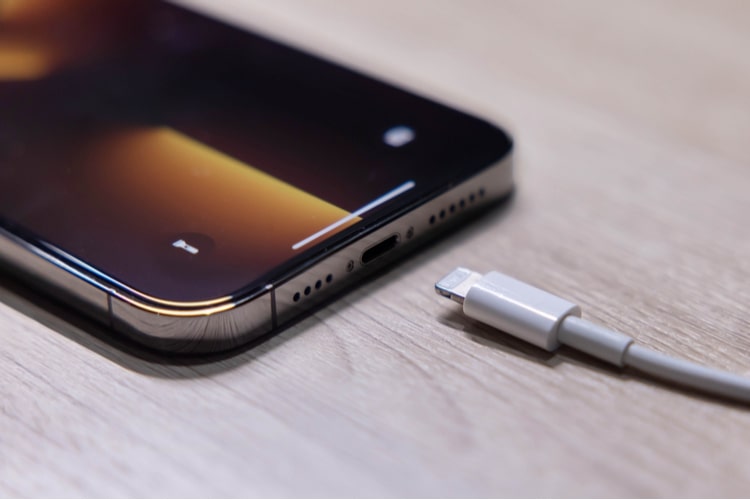
Apple Inc. is testing future iPhone models that replace the current Lightning charging port with the more prevalent USB-C connector, according to people with knowledge of the situation, a move that could help the company conform with looming European regulations.
In addition to testing models with a USB-C port in recent months, Apple is working on an adapter that would let future iPhones work with accessories designed for the current Lightning connector, said the people, who asked not to be identified because the matter is private.
If the company proceeds with the change, it wouldn’t occur until 2023 at the earliest. Apple is planning to retain the Lightning connector for this year’s new models.
By moving to USB-C, Apple would streamline the collection of chargers used by its various devices. Most of the company’s iPads and Macs already rely on USB-C rather than Lightning. That means that Apple customers can’t use a single charger for their iPhone, iPads and Macs — an odd setup given Apple’s penchant for simplicity. Wireless chargers for both the iPhone and Apple Watch also use a USB-C connector for their power bricks.
Apple, based in Cupertino, California, declined to comment on the change.
The move, which analyst Ming-Chi Kuo has also predicted, would come with trade-offs — and potentially create confusion for customers. USB-C chargers are slightly larger than the Lightning connector, but can offer quicker charging speeds and data transfers. The new connectors also would be compatible with many existing chargers for non-Apple devices, like Android phones and tablets.
But the majority of Apple accessories — including AirPods, the Apple TV remote, the MagSafe battery pack and the MagSafe Duo charger — still use Lightning. The USB-C adapter in development could mitigate that issue, but it’s unclear if Apple would include that in the box or make customers pay extra for it.
There’s also a wide range of third-party accessories, such as chargers, car adapters and external microphones, that use the existing connector. A switch would force third-party providers to redesign their products.
And the shift would lessen Apple’s control over the iPhone accessories marketplace. Apple forces accessory makers to pay it to use the Lightning connector and partake in a stringent approval process. USB-C is a standard used by many consumer device makers, including most Android phone manufacturers, making it less likely that Apple will be able to exert its usual level of control.
In recent years, Apple also has worked on iPhones without any charging port, seeking to promote the MagSafe wireless charging system introduced in 2020. But a wireless connection is often slower at charging a phone’s battery and doesn’t sync data with other devices as quickly. It’s also not practical in all situations, such as the setup in some cars.
A key reason for making the change is the European Union’s decision to force phone and other device makers to adopt USB-C. In April, legislation for such a requirement was approved by a majority vote.
“Mobile phones, tablets, digital cameras, headphones and headsets, handheld video-game consoles and portable speakers, rechargeable via a wired cable, would have to be equipped with a USB Type-C port, regardless of the manufacturer,” according to the legislation.
Apple has said the European law would hurt its ability to innovate. “We are concerned that regulation mandating just one type of connector for all devices on the market will harm European consumers by slowing down the introduction of beneficial innovations in charging standards, including those related to safety and energy efficiency,” the company said last year.
Apple could conceivably release a version of the iPhone for Europe that is compliant while keeping Lightning elsewhere. But having multiple versions of the same iPhone with different connectors would probably bring even more confusion, as well as supply-chain headaches.
It’s unclear if Apple might ultimately abandon the USB-C switch if the European law fails to materialize. Many consumers have been calling for the change regardless, for the sake of simplicity.
A move to USB-C would be the second port change in the iPhone’s history. Starting with the original iPhone in 2007 through the iPhone 4s in 2011, Apple used the 30-pin iPod connector popularized years earlier. With the iPhone 5, Apple switched to the smaller Lightning port, touting its more durable design that could be inserted into the iPhone in either direction.
[“source=indianexpress”]
